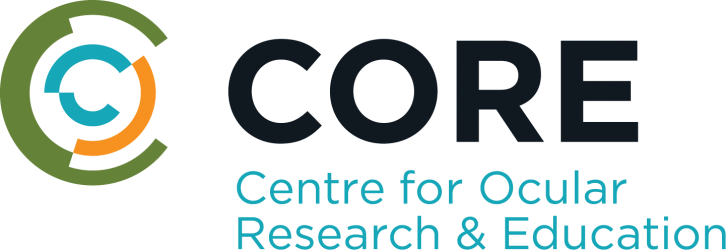Publications
Showing 25 results out of 70 in total.
Impact of contact lens discomfort on contact lens dropout
2025.
Akerman D, Jones D, Thakrar V, Sankaridurg P, Woods C. ZEISS Myopia Control Webinar Mar 20, 2025
Aryal,S., Irving,E., Christian,L.W., Jones,D. McCulloch,D., Leat,S.
The Waterloo Differential Acuity Test (WatDAT)—Testability and normative data
Ophthalmic and Physiological Optics 2025;Online ahead of print [ Show Abstract ]
Purpose: To investigate the testability of the WatDAT for measuring recognition visual acuity (VA) in children aged between 18 to 48 months, report preliminary age-related data and compare with two commercially available matching tests.
Methods: A total of 57 children (18.5-45.8 months) attended for two sessions. Forty-six children were placed in a typical group and 11 were classified as atypical if general or ocular health history or prematurity was reported. Binocular and monocular VA was attempted with WatDAT House/Circle (HC) and WatDAT Faces. Binocular VA was attempted with Kay Pictures and Patti Pics. The percentage able to complete each test (testability) and the corresponding VA are reported.
Results: The percentage of typical children able to complete binocular testing with the WatDAT HC, WatDAT Faces, Patti Pics and Kay Pictures was 96%, 86%, 75% and 80%, respectively. More children were testable with the binocular WatDAT HC compared to the Patti Pics and with WatDAT HC compared to Kay Pictures (p = 0.03). Monocularly, 56% and 54%, respectively, were testable with WatDAT HC and WatDAT Faces for both eyes. VA improved with age for all measures. Repeated measures ANOVA indicated that there was no significant difference between binocular VA with WatDAT HC and WatDAT Faces (p = 0.07), but there was a significant difference between the other tests. Both WatDAT tests gave poorer VA than the Patti Pics or Kay Pictures, while the Patti Pics gave poorer VA than Kay Pictures. Of the atypical children, 82% completed both the WatDAT HC and WatDAT Faces binocularly.
Conclusions: WatDAT HC had good testability, comparable or better than testability for other tests for younger age groups as reported in the literature. Additionally, the results indicate higher testability with the WatDAT HC compared to Patti Pics matching and Kay Pictures. VA improved with age from 18 to 47 months.
Block S, Jones D, Liu M. The International Myopia Institute White Papers AOA Optometry's Meeting, Minneapolis, USA, Jun 26, 2025
Chow,A., Caffery,B., Guthrie,S., Acs,M., Di Marco,A., Fromstein,S., Ramdass,S., Thakrar,V., Pal,S., Zeidenberg,M., Jones,D.
Myopia Management in Ontario, Canada
Journal of Clinical Medicine 2025;14(14):Article 5132 [ Show Abstract ]
Objectives: To determine how optometrists in Canada manage their pediatric myopia patients and to assess whether this has changed over time.
Methods: In a retrospective chart review, records for children aged 6–10 years who had an eye exam between 2017 to 2021 were reviewed. Children were grouped by presenting refraction (myopes ≤ −0.50 D or pre-myopes ≤ +0.75 D). Up to five unique patients were selected for each age (6, 7, 8, 9, and 10) and initial visit year (2017 to 2021) for each group (myopes and pre-myopes), for a maximum of 250 files per practice. Demographic information, refraction, and recommended interventions were recorded. Logistic regression was used to model the likelihood of being prescribed a myopia control intervention based on patient and optometrist characteristics.
Results: A total of 2905 patients (n = 1467 (50%) female) from 15 practices across Ontario, Canada, were included, accounting for 8546 visits. Optometrists predominantly prescribed single-vision spectacle correction as a first-line intervention for myopic children, although this declined from 98.2% in 2017 to 56.7% in 2023. The use of myopia control modalities increased from 1.8% to 43.3% over this same period. Optometrists began recommending myopia control at lower myopic refractive errors over time (−2.63 DS in 2017 vs and −1.49 DS in 2020). Myopia control spectacles were the most commonly prescribed intervention, despite the observation that optometrists are not hesitant to fit contact lenses in younger children. Optometrists who had been in practice longer were more likely to prescribe older forms of myopia control (e.g., bifocals/progressives) than more recent graduates.
Conclusions: While single-vision spectacle correction remains a primary approach for initial myopia management in Ontario, Canada, optometrists increasingly recommend myopia control and are initiating interventions earlier.
Craig J, Wolffsohn J, Jones L, Stapleton F. TFOS Dry Eye Workshop (DEWS) III British Contact Lens Association Meeting, Birmingham, UK, Jun 6, 2025
Darge H. Fast Forward to the Future: Engineering Vision Contact Lens Spectrum 2025;40, 3 April:
Darge,H., Phan,C.M., Ng,A., Ho,B., Wulff,D., Hui,A., Jones,L.
Development of an Eye Model Using 3D-Printing for Correlating Measured Intraocular Pressure with Actual Internal Pressure
Current Eye Research 2025;Online ahead of print [ Show Abstract ]
Purpose: The aim of this study was to develop a 3D-printed eye model to simulate measuring intraocular pressure (IOP) as a training device, and to assess the correlation between measured IOP using common clinical techniques and actual internal pressure.
Methods: The IOP eye model was designed using CAD software and printed with a resin stereolithography (SLA) 3D-printer (Formlabs 3B, Formlabs Inc., MA, USA). Two clinical instruments, Tono-pen (Tono-Pen AVIA, Reichert Ophthalmic Instruments, USA), and Perkins hand-held tonometer (Clement Clarke Perkins Tonometer Mk2, Vision Equipment Inc., USA) were used for IOP measurements of the model. The pressure within the model was adjusted between 7 to 55 mmHg at 5 mmHg increments, and the IOP values of the tonometry were correlated to the internal pressure displayed on the gauge.
Results: The IOP model could reliably produce internal pressure from 0 to 56 mmHg. The results showed that the Tono-pen measurements above 7 mmHg were closely correlated to the internal pressure obtained from the pressure gauge (Pearson r = 0.99, p < 0.0001). However, aligning the mires and measuring IOP accurately with the Perkins device was challenging.
Conclusion: The 3D-printed eye model was able to strongly correlate IOP readings taken with a Tono-pen with internal pressure measured by a pressure gauge. The internal pressure of this model can be regulated and is envisioned as a potential model for practicing tonometry at different ranges of pressure.
Derbyshire L, Young K, Zucaro A, Schulze M.. Interview & Video: Sustainability in contact lenses
Optometry Today: https://www.aop.org.uk/ot/videos/2025/09/11/sustainability-in-contact-lenses 2025
Downie,L.E., Craig,J.P., Stapleton,F., Tan,J., Jones,L., Ng, A.Y., Hinds,M., Bosworth,C., Alster,Y.
Efficacy and safety of AZR-MD-001 selenium sulfide ophthalmic ointment in adults with meibomian gland dysfunction over six months of treatment: A Phase 2, vehicle-controlled, randomized extension trial
Ocular Surface 2025;35(January):15-24 [ Show Abstract ]
Purpose: To determine the efficacy and safety of AZR-MD-001 (0.5 % and 1.0 %) ophthalmic ointment, relative to vehicle, over 3–6 months of treatment, in participants with meibomian gland dysfunction (MGD).
Methods: This was a Phase 2, randomized, vehicle-controlled, multicenter extension clinical trial. Eligible participants were adults with MGD (meibomian gland secretion score (MGS) ≤12 out of 15 glands) who discontinued all other dry eye or MGD treatments. Participants were randomized 1:1:1 to apply AZR-MD-001 1.0 %, 0.5 %, or vehicle to the lower eyelids, twice weekly. Key exploratory endpoints included the least-squared mean difference between groups in the change from baseline in clinical signs (meibomian gland yielding score; MGYLS) and symptoms (Ocular Surface Disease Index; OSDI), at clinic visits at Month 4.5 and 6, and safety measures from 36 months.
Results: Participants (66.5 % female) were randomized, at baseline, to AZR-MD-001 0.5 % (n = 82), 1.0 % (n = 83), or vehicle (n = 80). Statistically significant improvements, compared to vehicle, were observed at Month 6 in MGYLS for both AZR-MD-001 groups (0.5 % group: 1.9, 95 % CI 0.9 to 2.8, P = 0.002; 1.0 % group: 1.1, 95 % CI 0.2 to 2.1, P = 0.026), and in OSDI score for the 0.5 % group (−4.5, 95 % CI -8.0 to −0.9, P = 0.0135). The most common adverse events for AZR-MD-001 were application site pain, superficial punctate keratitis and eye pain; most were mild to moderate in severity, and decreased in incidence over time.
Conclusions: AZR-MD-001 (0.5 %) was efficacious in treating signs and symptoms of MGD over six months, with a lower observed incidence of new adverse events over time.
Efron,N., Morgan,P., Woods,C. A., Jones,D. A., Jones,L., Santodomingo-Rubido,J., Nichols,J.
International trends in prescribing contact lenses for myopia control (2011–2024): An update
Contact Lens Anterior Eye 2025;Online ahead of print [ Show Abstract ]
Purpose: The progression of myopia can be slowed using soft myopia control (SMC) and orthokeratology myopia control (OKMC) contact lenses. The purpose of this work is to update an earlier survey (covering years 2011–2018) by describing international trends in SMC and OKMC fitting between 2011 and 2024.
Method: An annual contact lens prescribing survey was sent to eye care practitioners in up to 71 countries between 2011 and 2024. Data are reported here for 8,578 lens fits undertaken across 20 countries to 6–12-year-old children, comprising 688 SMC fits, 918 OKMC fits, and 6,972 non-myopia control (NMC) fits. To assess current trends, the proportion of fits between 2020 and 2024 for 12 countries returning ≥30 myopia control fits was analysed (n = 2,277 fits).
Results: There was a small increase in SMC fitting from 0.0 % in 2011 to 3.9 % in 2016, a significant increase to 29.5 % in 2021, and a slower increase to 30.4 % in 2024 (p < 0.0001). The proportion of OKMC fits, in relation to all rigid lens fits, increased from 40.8 % in 2011 to 86.9 % in 2024 (p < 0.0001). Of all soft lens fits, SMC fits were 7.2 % and 8.7 % to males and females, respectively (p = 0.0008). There was a decrease in the percentage of SMC fits with increasing age (p < 0.0001). No such sex/age associations were evident with OKMC fits. The proportion of all contact lens fits over the past 5 years (2020–2024) were as follows: SMC fits – 24 % (n = 525), OKMC fits – 17 % (n = 320), and NMC lens fits – 59 % (n = 1,332).
Conclusion: There has been a substantial increase in SMC and OKMC lens fitting over the past 14 years, reflecting a heightened awareness among eye care practitioners and parents of the importance of slowing the progression of myopia in children.
Fadel D, Barnett M. Workshop. Unconventional Applications of Scleral Lenses Global Specialty Lens Symposium, Las Vegas, Jan 16, 2025
Fadel D, Barnett M.
Specialty Contact Lenses: 1st edition
Elsevier Inc., Philadelphia, PA, USA. 2025.
Fadel D, Barnett M.. Unconventional Uses of Scleral Lenses Contact Lens Spectrum 2025;40, July/August: 12-17
Fadel D, Carrasquillo K, Flores P, Cárdenas N.. Workshop. Keratoconus: Clear Vision Ahead, from Diagnosis to Management Global Specialty Lens Symposium, Las Vegas, Jan 16, 2025
Flitcroft,I., Bullimore,M.A., Gifford,K., Jonas,J. B., Jones,D., Jones,L., Kang,P., Resnikocc,S., Walline,J., Wildsoet,C.
Myopia Correction, Myopia Control and Myopia Management: Definitions and Recommended Usage
Investigative Ophthalmology & Visual Science 2025;66(6):Article 41 [ Show Abstract ]
The terms “myopia management” and “myopia control” are frequently used in both eye care and research settings, sometimes interchangeably, leading to potential confusion. Although both terms are important and useful in different situations, they represent fundamentally distinct concepts. When using such terms, it is important to consider the context and application—for example, whether they are being discussed with parents or included in written materials such as medical publications, marketing content, or regulatory documents. Their use may also vary by country. The aim of this article is to provide clear definitions of these terms, based on their evolution in recent years,1–4 and informed by consultations with industry representatives and members of the myopia research community.
Garg P, Shokrollahi P, Phan CM, Jones L. 3D printed contact lenses for the delivery of polyvinyl alcohol as a wetting agent The Association for Research in Vision and Ophthalmology Annual Meeting, Salt Lake City, May 7, 2025 [ Show Abstract ]
Purpose
To print a proof-of-concept 3D printed contact lenses to release polyvinyl alcohol (PVA) as a wetting agent, using 3D printing technology.
Methods
A model CL was designed using a computer-aided design software (FreeCAD 0.19) and 3D-printed using a commercial masked-stereolithography 3D printer. The printer was retrofitted with a humidity and temperature control kit to enable printing at ~95% humidity and 37°C. The polymer solution consisted of 10% (w/v) GelMA, 5% (w/v) PVA as a wetting agent, a photoinitiator, and yellow dye as a light absorbing agent to reduce unwanted light leaks. These 3D printed lenses were washed with warm PBS to remove any uncured polymer solution and post-cured with UV light. The print quality was assessed by determining the ratio between the theoretical area vs the actual printed area and the theoretical circumference vs the actual printed circumference. To study the PVA release from these CLs, they were incubated in glass vials with gentle agitation with 8 mL PBS at 35°C. At each indicated time point 300 µL of the solution was removed for detection of PVA and replaced with fresh PBS. The release kinetics was studied by different mathematical models using GraphPad software.
Results
The CLs were 3D printed in an hour and the print quality scores were 0.96 and 1.04 for area and circumference ratios respectively. The minimum thickness for the lenses that was reliably printed each time using the current 3D printing setup was 400 µm. Around 4711 µg of PVA was released over the study duration of 8 hours, supporting our concept PVA-loaded 3D printed lenses. The release kinetics showed high linearity with Higuchi’s model which describes the release rate of drugs from matrix systems based on diffusion.
Conclusions
This study attempted to print a proof-of-concept 3D printed contact lens that can release PVA from GelMA. Also, these 3D printed contact lenses displayed a good print quality score. Future work will focus on optimizing the thickness and transparency of these lenses as well as tuning the release kinetics of PVA.
Garg,P., Shokrollahi,P., Darge,H., Phan,C-M., Jones,L.
Controlled PVA Release from Chemical-Physical Interpenetrating Networks to Treat Dry Eyes
ACS Omega 2025;10(1):1249-1260 [ Show Abstract ]
Dry eye disease is becoming increasingly prevalent, and lubricating eye drops, a mainstay of its treatment, have a short duration of time on the ocular surface. Although there are various drug delivery methods to increase the ocular surface residence time of a topical lubricant, the main problem is the burst release from these delivery systems. To overcome this limitation, herein, a chemical–physical interpenetrating network (IPN) was fabricated to take control over the release of poly(vinyl alcohol) (PVA), a well-known therapeutic agent used to stabilize tear film, from gelatin methacrylate (GelMA) hydrogels. In this report, PVA was specifically used as part of a GelMA-based polymeric hydrogel owing to its physical cross-linking ability via a simple freeze-thaw method. The interpenetrating polymer network was fabricated in a sequential manner where GelMA was chemically cross-linked by photo-cross-linking, followed by physical cross-linking of PVA using a relatively short freeze-thaw cycle. Interestingly, upon applying only one short freeze-thaw cycle (of 1 or 2 h), the crystalline domains in PVA were increased in the interpenetrating network. The endothermic peaks at 48 and 60 °C in differential scanning calorimetry (DSC) thermograms and 20°–2θ peaks in X-ray diffraction (XRD) patterns suggest the presence of these crystalline domains. With the help of a suite of characterization, we further delineate the role of freeze-thaw cycles in taking control over the release of PVA. The release profiles of the PVA-containing hydrogels showed highest linearity with the Korsmeyer–Peppas model (0.9944 < R2 < 0.9952), indicating that these systems follow non-Fickian or anomalous transport.
Garg,P., Shokrollahi,P., Darge,H., Phan,C-M., Jones,L.
3D-Printed Contact Lenses to Release Polyvinyl Alcohol as a Therapeutic Agent for the Treatment of Dry Eyes
Pharmaceutics 2025;17(2):Article 219 [ Show Abstract ]
Purpose: Dry eye disease is highly prevalent, and the most common treatment, lubricating eye drops, only remains effective for a very short period of time. This project aims to 3D print a proof-of-concept, custom-fit, polyvinyl alcohol (PVA)-eluting contact lens (CL) for the treatment of dry eye disease. PVA is a commonly used viscosity enhancer in eye drops, with the capability of reducing symptoms of dry eye by stabilizing the tear film and reducing tear evaporation. The protective effects of PVA could be attributed to its water-retaining ability, which provides moisturization and prevents the loss of water.
Method: In this work, a low-cost stereolithography-based 3D printer was retrofitted with a humidity and temperature control kit to 3D print a PVA-loaded custom-fit CL. To evaluate the print quality of the 3D-printed CL, circularity was used to evaluate the shape fidelity in 3D printing. The PVA release from these lenses was assessed, along with its role in acting as a viscosity enhancer. The effect of PVA was further analyzed by a dry eye disease (desiccation stress) cell model.
Results: The shape fidelity evaluation of the 3D-printed CL displayed excellent circularity. The diameter, sagittal depth, and base curve of the 3D-printed lenses were measured to be 14.27 ± 0.06 mm, 3.77 ± 0.16 mm, and 6.4 ± 0.24 mm, respectively. The PVA release curves showed that approximately 1300 µg of PVA was released over the study duration of 24 h.
Conclusions: Overall, this work demonstrates that a 3D-printed PVA-eluting CL is a promising candidate for the treatment of dry eye.
Garg,P., Shokrollahi,P., Phan,C.-M., Jones,L.
Biodegradable 3D-Printed Conjunctival Inserts for the Treatment of Dry Eyes
Polymers 2025;17(5): [ Show Abstract ]
Purpose: To fabricate 3D-printed, biodegradable conjunctival gelatin methacrylate (GelMA) inserts that can release polyvinyl alcohol (PVA) when exposed to an ocular surface enzyme.
Method: In this work, biodegradable conjunctival inserts were 3D-printed using a stereolithography-based technique. The release of PVA from these insert formulations (containing 10% GelMA and 5% PVA (P-Gel-5%)) was assessed along with different mathematical models of drug release. The biodegradation rates of these inserts were studied in the presence of a tear-film enzyme (matrix metalloproteinase-9; MMP9). The morphology of the inserts before and after enzymatic degradation was monitored using scanning electron microscopy.
Results: The 3D-printed P-Gel-5% inserts formed a semi-interpenetrating network, which was mechanically stronger than GelMA inserts. The PVA release graphs demonstrate that at the end of 24 h, 222.7 ± 20.3 µg, 265.5 ± 27.1 µg, and 242.7 ± 30.4 µg of PVA were released when exposed to 25, 50, and 100 µg/mL of MMP9, respectively. The release profiles of the P-Gel-5% containing hydrogels in the presence of different concentrations of MMP9 showed the highest linearity with the Korsmeyer–Peppas model. The results suggest that the degradation rate over 24 h is a function of MMP9 enzyme concentration. Over 80% of P-Gel-5% inserts were degraded at the end of 8 h, 12 h, and 24 h in the presence of 100, 50, and 25 µg/mL MMP9 enzyme solutions, respectively.
Conclusions: These results demonstrate the potential for 3D printing of GelMA for use as conjunctival inserts. These inserts could be used to deliver PVA, which is a well-known therapeutic agent for dry eye disease. PVA release is influenced by multiple mechanisms, including diffusion and enzymatic degradation, which is supported by morphological studies and biodegradation results.
Jiang,Q., Zhang,Z., Niu,L., Wang,B., Fadel,D., Wei,R., Chen,Z.
Changes in anterior segment after short-term scleral lens wear in healthy Chinese population
Contact Lens Anterior Eye 2025;48(1):102291 [ Show Abstract ]
Purpose
To evaluate the impact of short-term scleral lens (SL) wear on anterior chamber (AC) dimension and central corneal thickness (CCT) in healthy Chinese people.
Methods
This is a prospective, daily wear study. Eligible participants were dispensed SLs to correct refractive errors. Anterior segment (AS) parameters were measured by AS optical coherence tomography (AS-OCT) before, during, and after 2 and 4 hours of lens wear. Repeated-measures analysis of variance (ANOVA) was used to analyze the changes in AS parameters over time.
Results
Twelve subjects (10 females and 2 males) with a mean age of 25.3 ± 3.8 years (ranging from 21 to 34 years) were recruited. The AC parameters, including anterior chamber depth (ACD) from the endothelium (endo-ACD), angle opening distance at 500 μm (AOD500), and trabecular-iris space area at 500 μm (TISA500), significantly decreased after wearing SLs for 4 hours (P<0.05). CCT increased by 12 μm (2.29 %) after wearing SLs for 4 hours (P=0.013).
Conclusion
This study suggests that SL wear has a significant impact on AS dimensions in patients with healthy corneas in the short term with SL in situ, but tend to recover quickly after SL removal. Further research is needed to determine whether the change in AS dimensions during SL wear affects aqueous humor (AH) outflow and causes changes in intraocular pressure (IOP).
Jones D. Treatment Algorithm Myopia Summit, April 12, 2025
Jones D. International Myopia Institute (IMI) 2025 Reports - Instrumentation British Contact Lens Association Meeting, Birmingham, UK, Jun 5, 2025
Jones D, Flitcroft I. Case Studies Myopia Summit, April 12, 2025
Jones L. Implementing a CL study in 2025: Considerations & challenges for scleral lens research. International Forum for Scleral Lens Research (IFSLR), Las Vegas, USA, Jan 15, 2025





